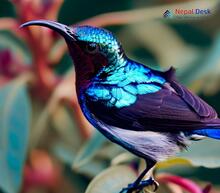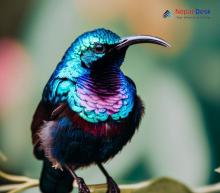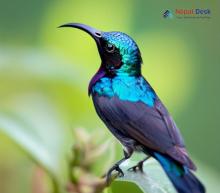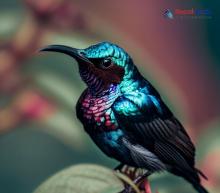The marvelous world of birds has fascinated ornithologists and birdwatchers alike for centuries. Among the diverse avian species lies the captivating Cinnyris genus, known for its vibrant colors and nectar-feeding habits. This article will dive into the fascinating aspects of the Cinnyris genus, exploring their evolution tree, taxonomy, morphology, and ecology, as well as their intriguing presence in Nepal.
Evolution Tree and Taxonomy
The Cinnyris genus belongs to the Nectariniidae family within the Passeriformes bird order. It is widely believed that these birds evolved alongside flowering plants, coevolving to take advantage of nectar as a food source. As a result, they have developed specialized adaptations such as long curved beaks and brush-tipped tongues—perfect for sipping nectar from flowers.
Approximately 15 species fall under the Cinnyris genus umbrella. While some of these species were previously classified under Nectarinia or Anthreptes genera, molecular studies have since positioned them within Cinnyris. These charming birds are found across Asia and Africa's tropical and subtropical regions, showcasing a variety of colors and markings that set them apart from their relatives.
Morphology and Ecology
Cinnyris species are small to medium-sized birds with slender bodies measuring roughly 9 to 15 cm in length and weighing between 6 to 12 grams on average. Sporting vivid hues ranging from metallic blues, greens, yellows, and oranges; they possess an iridescent sheen that makes their feathers shimmer in sunlight. Male Cinnyris birds typically exhibit brighter colors compared to females who display more muted tones for better camouflage while nesting.
Primarily nectarivorous, Cinnyris species have evolved to be efficient pollinators. They often hover to reach flowers with their long, specialized beaks, drinking nectar while simultaneously pollinating the plant. However, supplementing their diet with insects adds essential proteins required for the breeding season. Their nest architecture also varies among species—some build cup-shaped nests in bushes or trees, while others construct pendulous nests suspended from branches.
Cinnyris Presence in Nepal
One notable species of Cinnyris found in the diverse ecosystems of Nepal is the Crimson Sunbird (Cinnyris asiaticus). These striking birds favor the subtropical forests and shrublands extending from the Terai lowlands up to elevations of about 2400 meters. As their population remains stable, they continue to serve as brilliant reminders of Nepal's thriving biodiversity.
In conclusion, the Cinnyris genus offers an enthralling insight into the diverse world of sunbirds and their role as nectar-drinking pollinators. With such remarkable adaptability and stunning beauty, it's no wonder these birds have captured the hearts of birdwatchers and researchers alike. The continued study of their evolution tree, taxonomy, morphology, and ecology is crucial in unraveling more fascinating secrets these vibrant avian wonders hold.




